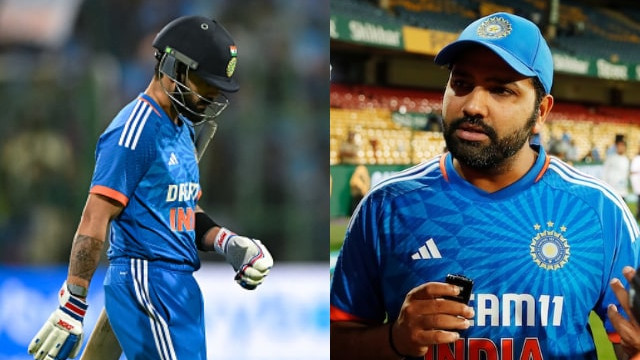
Cricket is a game of numbers, and if you’re a fan of betting on cricket, you probably know how important cricket betting stats are. Cricket betting stats are numerical data that show the performance and trends of teams and players in various aspects of the game, such as batting, bowling, fielding, etc.
But cricket betting stats are not magic bullets that guarantee success. If you use them incorrectly or blindly, they can lead you to make costly mistakes that can ruin your betting experience and your bankroll.
Even though cricket betting apps provide you with easy and convenient access to a wide range of cricket betting options, markets, odds, and features, as well as useful and relevant cricket betting stats, analysis, and tips.
Do you know how to adjust your cricket betting stats for the level of competition and the format of the game? Do you know how to avoid being swayed by the crowd or the experts who may have their agendas or biases?
If you answered no to any of these questions, don’t worry. You’re not alone. Many bettors make these common mistakes when using cricket betting stats, and they end up losing money or missing out on opportunities.
In this article, we’ll show you how to identify and avoid some of the most common mistakes that bettors make when using cricket betting stats, and how to use them wisely and responsibly.
The Misleading Nature of Recent Form
One of the most common mistakes that bettors make when using cricket betting stats is relying too much on recent form. Recent form refers to how well or poorly a team or a player has performed in their last few matches, usually within the same series or tournament.
However, this can be a very risky strategy, especially in cricket, where conditions, formats, and opponents can vary significantly from match to match. Cricket is a game of uncertainties, and past performance is not always a guarantee of future results.
Numerous factors can influence a match's outcome, including venue, pitch, weather, injuries, fatigue, and motivation. These factors can alter the game's dynamics and power balance, potentially defying expectations based on recent cricket betting stats.
Here is an example of teams or players who performed well or poorly in recent matches, but reversed their fortunes in subsequent ones:
In the 2019 Cricket World Cup, England lost two consecutive matches against Sri Lanka and Australia, and their chances of reaching the semi-finals looked bleak. However, they bounced back and won their next three matches against India, New Zealand, and Australia, and went on to win the tournament for the first time.
So, how can you avoid this mistake of relying too much on recent forms? Here are some ways to do so:
-
Look at longer-term trends, not just recent matches. Cricket betting stats can be more reliable and relevant if they are based on a larger sample size of matches, preferably across different series, tournaments, venues, and conditions.
-
Look at head-to-head records, not just overall records. Cricket betting stats can be more reliable and relevant if they are based on the specific matches between the teams or players involved, rather than their overall records against all teams or players.
-
Look at other factors that may affect performance, not just cricket betting stats. Cricket betting stats can be more reliable and relevant if they are complemented by other factors that may affect the outcome of the match and the performance of the teams and players, such as the venue, pitch, weather, toss, injuries, fatigue, motivation, etc.
The Importance of Match Context
Another common mistake that bettors make when using cricket betting stats is ignoring the context of the match. The context of the match refers to the external factors that can influence the outcome of the match and the performance of the teams and players, such as the venue, pitch, weather, toss, etc.
For example, the venue can affect the home advantage or disadvantage of the teams, the crowd support or pressure, the familiarity or unfamiliarity with the conditions, etc. The pitch can affect the bounce, pace, spin, seam, swing, etc. of the ball, and the ease or difficulty of batting and bowling. The weather can affect the humidity, temperature, wind, cloud cover, rain, dew, etc. of the environment, and the visibility or comfort of the players.
Here is an example of matches where the context played a crucial role in determining the result, such as low-scoring or high-scoring matches, matches affected by rain or dew, etc.:
During the 2020-21 Border-Gavaskar Trophy, India clinched a 2-1 series victory over Australia in a thrilling four-match Test series. The series' dynamics were shaped by diverse pitch conditions ranging from Adelaide and Brisbane's pace-friendly surfaces to Melbourne and Sydney's spinner-supportive tracks.
The weather also played its part, with hotter conditions in the former cities and cooler, wetter climates in the latter. The toss outcomes, with Australia securing it in the first and last Tests and India in the middle two, also added to the strategic complexity. Moreover, both teams grappled with significant injuries to crucial players, impacting the series' progression.
So, how can you avoid this mistake of ignoring the context of the match? Here are some ways to do so:
-
Research the history and characteristics of the venue, such as the average scores, the results, the records, the trends, etc. of the teams and players who have played there before.
-
Check the weather forecast, such as the temperature, humidity, wind, cloud cover, rain, dew, etc. of the location, and how they may change during the match. Analyze the strengths and weaknesses of the teams and players in different conditions, such as the formats, the pitches, the weather, the toss, etc.
Evaluating Opposition Strength
A third common mistake that bettors make when using cricket betting stats is overlooking the quality and depth of the opposition. The quality and depth of the opposition refers to the level of skill, experience, and talent of the teams and players that a team or a player faces in a match or a series.
For example, the quality and depth of the opposition can affect the difficulty or ease of scoring runs or taking wickets, the pressure or confidence of the teams or players, the tactics or strategies of the teams or players, etc.
Here is an example of teams or players who performed well or poorly against strong or weak opposition, and how that affected their cricket betting stats:
In the 2021 Indian Premier League, Punjab Kings batsman Mayank Agarwal scored 260 runs in seven innings, at an average of 43.33, and a strike rate of 141.30. His cricket betting stats were impressive, as he scored three half-centuries, and was the second-highest run-scorer for his team.
However, he faced weak opposition, such as Rajasthan Royals, Sunrisers Hyderabad, and Kolkata Knight Riders, who were among the bottom teams in the tournament, and who had weak or inconsistent bowling attacks that leaked runs or failed to take wickets.
So, how can you avoid this mistake of overlooking the quality and depth of the opposition? Here are some ways to do so:
-
Compare the cricket betting stats of the teams and players against similar or different levels of opposition, such as the rankings, ratings, records, etc. of the teams and players they have faced or will face.
-
Take into account the form, fitness, and availability of the key players on both sides, such as the runs, wickets, averages, strike rates, etc. of the players in their recent matches, and the injuries, illnesses, suspensions, etc. of the players that may affect their participation or performance.
Smart Betting Through Insightful Use of Stats
In conclusion, the essence of our discussion centres on navigating the common errors made while utilizing cricket betting stats.
The key points to take away include the need for a broader perspective than just recent form, the significance of understanding match conditions such as venue, weather, and the toss, the importance of considering the strength of the opposition, and the risk of relying solely on popular opinion or expert advice.
By acknowledging the intricacies behind the numbers and applying a thoughtful analysis, bettors can place more informed and potentially successful wagers.



